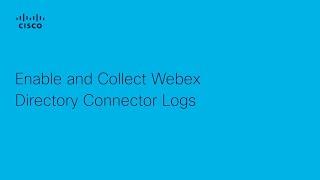Subscribe to our YouTube channel to stay up to date on all of our world-class products and exciting updates: https://goo.gl/YhZF9h
In loving honor of Jean Tabaka: Nov. 9, 1954 – June 6, 2016
The agile methodology is a mindset that alters how you deliver value—a flow that transforms market strategy into marketable innovation. Learn about the basics of agile, including key considerations, the three main principles and popular myths. For more information, visit: http://cainc.to/Lw7fmZ
Does it feel like you’re running fast, only to find yourself falling farther behind? It could be because you’re taking long cycle times working on large batches of features. And, in the process, missing your innovation windows.
But there is an answer. And it’s called Agile.
Agile is a mindset that alters how you deliver value—it’s flow that transforms market strategy into marketable innovation.
But to become Agile, you’re going to have to let go of what made you successful in the past. And move beyond some of the myths you may have heard.
For example, that Agile is only for small software projects, with no planning, no documentation, cowboy coding.
Or maybe you’ve heard that it’s simply a collection of practices: daily stand-ups, sitting together, coding stories in short cycles, using demos to show your progress, and releasing software every two weeks.
Let’s talk about the reality of Agility. Namely, the three main principles that guide the Agile mindset. As we go through these, I’d invite you to define business practices that you can associate with each principle. This will give you a great starting point to see how Agile applies to your organization.
First, transparency. Agile invites high visibility in order to maintain alignment, clarity of focus, and a discipline of how strategies move to delivery.
Next, flow efficiency—or put another way, emphasizing what we do to increase value delivery in a continuous fashion. It’s about watching the work, not the worker, and removing all the blocks that keep value from flowing.
Finally, Agile organizations learn through empowerment. Leaders know innovation happens when the people closest to the knowledge are given the ability to put that knowledge to its best use.
With all this information, you may now be asking yourself, is Agile right for my large organization?
In a word, absolutely.
Agile principles are imminently scalable, and can be used as a guide to help you define your workflow, inspect your progress, and adapt to shifting environments. No matter how large our organization is…or becomes.
Which means you ultimately decrease time-to-market, increase innovation, and improve your ability to attract top talent.
In loving honor of Jean Tabaka: Nov. 9, 1954 – June 6, 2016
The agile methodology is a mindset that alters how you deliver value—a flow that transforms market strategy into marketable innovation. Learn about the basics of agile, including key considerations, the three main principles and popular myths. For more information, visit: http://cainc.to/Lw7fmZ
Does it feel like you’re running fast, only to find yourself falling farther behind? It could be because you’re taking long cycle times working on large batches of features. And, in the process, missing your innovation windows.
But there is an answer. And it’s called Agile.
Agile is a mindset that alters how you deliver value—it’s flow that transforms market strategy into marketable innovation.
But to become Agile, you’re going to have to let go of what made you successful in the past. And move beyond some of the myths you may have heard.
For example, that Agile is only for small software projects, with no planning, no documentation, cowboy coding.
Or maybe you’ve heard that it’s simply a collection of practices: daily stand-ups, sitting together, coding stories in short cycles, using demos to show your progress, and releasing software every two weeks.
Let’s talk about the reality of Agility. Namely, the three main principles that guide the Agile mindset. As we go through these, I’d invite you to define business practices that you can associate with each principle. This will give you a great starting point to see how Agile applies to your organization.
First, transparency. Agile invites high visibility in order to maintain alignment, clarity of focus, and a discipline of how strategies move to delivery.
Next, flow efficiency—or put another way, emphasizing what we do to increase value delivery in a continuous fashion. It’s about watching the work, not the worker, and removing all the blocks that keep value from flowing.
Finally, Agile organizations learn through empowerment. Leaders know innovation happens when the people closest to the knowledge are given the ability to put that knowledge to its best use.
With all this information, you may now be asking yourself, is Agile right for my large organization?
In a word, absolutely.
Agile principles are imminently scalable, and can be used as a guide to help you define your workflow, inspect your progress, and adapt to shifting environments. No matter how large our organization is…or becomes.
Which means you ultimately decrease time-to-market, increase innovation, and improve your ability to attract top talent.
- Category
- Broadcom
Be the first to comment







